 Different people get excited by different announcements in our hobby. Seeing Aerosoft working on a Tomcat certainly got my heart racing. The product in question has been available for quite a while now, so let’s take a look and see if it’s just as iconic as its real world counterpart.
Different people get excited by different announcements in our hobby. Seeing Aerosoft working on a Tomcat certainly got my heart racing. The product in question has been available for quite a while now, so let’s take a look and see if it’s just as iconic as its real world counterpart.
Even as a kid, I had a special place in my heart for the Grumman F-14 Tomcat. It has been my favourite fighter plane for as long as I have been able to distinguish it from, say, an F-16 or an F-18. Unfortunately, I’ve never had the chance to see one in real life, let alone see it fly. But with this release by Aerosoft, I’m suddenly getting almost as close to flying the real thing as one can get nowadays.
Development on what was to become the real-life Grumman F-14 Tomcat started in 1966 when it was becoming clear that a navalised version of the General Dynamics F-111 would not satisfy the US Navy. The Navy started the “Naval Fighter Experimental” (VFX) program in 1968, and in 1969 Grumman was selected as the winner. 22 months later, on 21 December 1970, the F-14 Tomcat made its first flight. Initial Operating Capability with the US Navy was achieved in 1973.
The F-14 was built in 3 basic versions. The original F-14A was by far the most numerous of these versions. 478 were built for the US Navy as well as 80 for the Imperial Iranian Air Force. 79 of the aircraft intended for Iran were delivered before the Islamic revolution in that country. The 80th airframe was delivered to the US Navy instead. Improvements and added capabilities were added to ‘A-version’ Tomcats throughout production batches, and later during their service life.
The second main version was launched in 1987 as the F-14A+, later renamed to F-14B. While also receiving some updates in systems and avionics, the main difference compared to the F-14A were newer, more powerful and vastly more reliable engines. 48 F-14 A’s were converted to ‘B’-standard, and 38 new aircraft were built.
The ultimate version of the tomcat was the F-14D Super Tomcat. This version received new, digital avionics, a glass cockpit and a new RADAR and fire control system among other changes. A total of 55 F-14D’s were completed, 37 brand new airframes and 18 rebuilt ‘A’-models.
This software product by Aerosoft covers the F-14A in 3 versions (block 90, block 100 and block 110 production batches) and the F-14B.

Installation:
The Aerosoft installer provides a thoroughly tested and very reliable way of installing your add-ons. The full download for version 1.10 comes as a 785MB zip-file, with inside it the exe-file that is the actual installer, and a license agreement in 4 languages (English, German, French and Spanish).
The installer lets you choose which sim you want to install in. The choices are FSX (SP2 or Acceleration), FSX Steam Edition, and Prepar3D v2. That done, all you have left to do is enter your email address and the serial you received in the buying process, and the F-14 will be installed in your simulator of choice.
After installation, you’ll find the F-14 in your aircraft selection menu in 4 versions (Block 90, 100 and 110 ‘A’-models and the F-14B) with 14 different liveries in total. Apart from that, the installer also gives you a bunch of saved flights (on moving carriers!) and some AI models of different aircraft that are used in dynamic scenarios.

Manuals:
Documentation for the Aerosoft F-14 X comes in the form of 7 pdf-documents. These documents cover just about everything you need to get going in this aircraft. From how the aircraft is implemented in FSX (or P3D), over all cockpit systems and controls, to weapon systems and carrier operations. The documentation is very accessible and readable, and does a very good job of getting you started in the Tomcat. What I am missing, is a bit more in-depth information on the systems, and the weapon systems in particular. Also, there’s almost no information on the deployment of air-to-ground weapons.
Exterior:
The F-14 Tomcat is a very big, and visually imposing aircraft. No surprise, that’s how it’s represented in FS as well. Panning around the aircraft in FSX or P3D, it’s striking how powerful the F-14 looks. A powerful nose with that big canopy on top. A huge and very wide body with relatively slender variable-geometry wings. And imposing tail surfaces. All of that, very well represented in FS. But when we look past those big features, we see that the Aerosoft F-14 X doesn’t cut back on the details either: lots and lots of details everywhere. The usual focus here is the landing gear, and it’s very well modelled, but it isn’t the only part where small details can be admired. Other examples: the cockpit area, the tail hook assembly, antennas and other miscellaneous items. And of course, the wings with all their moving surfaces: flaps, spoilers and slats. Another area of note, is the inside of the wheel wells. The amount of detail in there is gorgeous! Down to carefully modelled hydraulic lines.
Of course, good modelling doesn’t mean a thing if the textures aren’t up to par. But fortunately, they are. The F-14 X is covered in sharp textures filled with details. And topped off with quite a bit of wear and tear. I certainly like what I see here.

Interior:
No matter how nice the exterior is, it’s in the cockpit that you’ll spend most of your time in this virtual machine. So I’m glad to say that the first impression is a very nice one here as well. Both cockpit sections are modelled: the forward one for the pilot, and the rear one for the RIO (Radar Intercept Officer). Both modelling and texturing are of high quality in both areas. All displays are also clearly readable. The one issue I had in that respect has been solved with the release of the first service pack. You’ll find many animated switches in the virtual cockpit as well. Especially the pilots area of responsibility is very complete in this respect. The RIO section less so, but still not to be ignored.
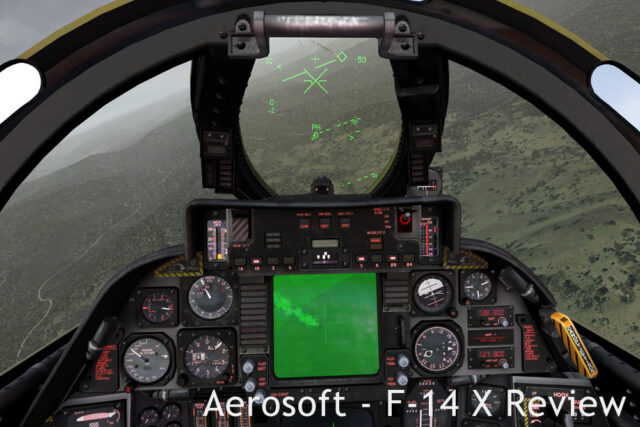

Systems:
There’s a lot to be said about the systems in the Aerosoft F-14 X. And as much as I try to say, I’m certain to forget some things. So I’ll stick with what strikes me as most noteworthy to write about here.
First of all, it has to be said there is no full 2D panel for the Tomcat. All flying will have to be done from the VC. There are some 2D popup-panels though. One bundles most of the available RIO-weapons controls as well as some hard to reach pilot controls on an easy-to-use 2D panel, so you can make better use of the F-14’s features while still flying it. The other 2D panel bundles a lot of functions related to operating the aircraft: selectable options, payload manager and automated checklists. One very nice feature I want to highlight from the available options is the ‘Mini-HUD’. This provides you with a screen overlay that displays some basic info along the top of your screen. Info concerning the engines, basic flight controls systems, the autopilot,… While not realistic, it makes handling the F-14 much easier. I found myself running with the mini-HUD enabled almost all the time.
The Payload Manager gives you real time loading of weapons and fuel, with live mass readouts. It’s here that some differences between the different block versions of the F-14A come to light: the earlier versions can’t handle all the load-outs the later versions can.
Finally, the interactive checklists are definitely worth talking about. They cover everything from cold start up to the carrier landing pattern and everything in between. They automatically check items you’ve completed. But you can also use them the other way round: let the checklist do something for you. If you don’t know how to complete an item, or don’t want to spend the time, you can click the checklist item, and it will automatically be done for you.
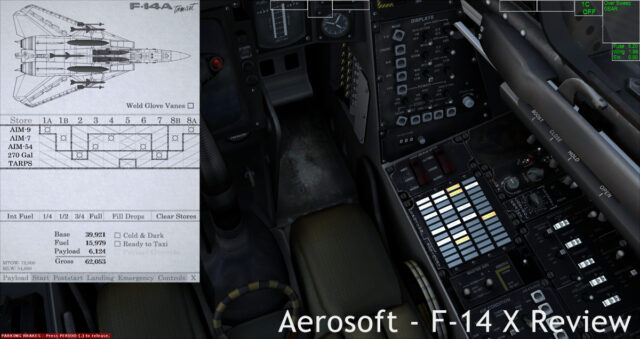

As for the in-aircraft system, features that represent real systems of the Tomcat, those definitely aren’t too shabby either. All the basics are there as they are expected to be. Certainly noteworthy is the HUD. A very nice HUD that comes in 2 variants: the early ‘on the canopy’ HUD of the F-14A and the later ‘Sparrowhawk’ HUD with which the F-14B was retrofitted. One problem with the HUD is that, due to the way it is implemented and how FSX (and P3D) works, is that it tends to disappear in extremely low visibility. Not very handy, as this is exactly the time you need it most. But too be clear, this problem is known to the developer, and it only happens with visibilities less than 1/8 mile or so.

The main party-piece of systems in this simulation product is the radar. A lot of work has gone in to this, and it shows. All modes of the real unit are simulated (Track-While-Scan, Range-While-Search, Pulse-Doppler-Search, Single-Target-Track etc.). It’s all very nice to play with, and can be used both from the pilot seat using the 2D popup, or from the RIO seat using the virtual cockpit controls.
Another aspect of this product deserving of some attention in this review is the engine simulation. Especially on the F-14A variants, you’ll have your hands full keeping the engines running. They’re very susceptible to compressor stalls and other stuff you don’t want happening. Especially during fast moving and dynamic situations (think air combat manoeuvring, aerobatics, or just final approach and landing) you can never afford to not mind the engines for a moment. One ill-advised action is all it takes for one or even both of them to stop working. Having all of this faithfully simulated certainly adds an element of realism and immersion to this simulation.
The navigation system is available and useful, but slightly limited. It’s based on the default FSX GPS and flight planner. While for most customers this is more than sufficient, and might even be a positive due to relative ease-of-use, others will regard this as a negative point.

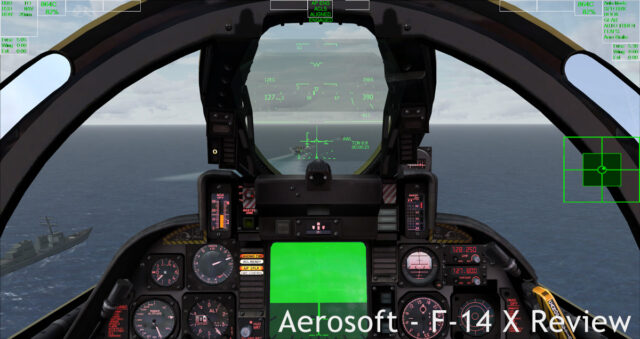
Flight dynamics:
In my opinion, the flight dynamics model is the most outstanding aspect of the Aerosoft F-14 X. Unlike many other aircraft for FSX or P3D, the F-14 definitely doesn’t feel like it’s ‘on rails’. It’s big, it’s powerful, it’s agile… And it’s twitchy like you wouldn’t believe. Especially at low speed and high angle-of-attack, the F-14 is a handful to fly. It can be very frustrating when the aircraft catches you by surprise, but it can be oh-so rewarding when you handle it well in difficult circumstances. On the other hand, the F-14 has lots of power to get you out of trouble. But as said before, you’ll have to be careful applying that power. Doing it too fast in the A-model will get you in trouble faster than it might have gotten you out. When the engines don’t stall, they’re more than eager to push your aircraft to high speeds and altitudes. Especially the B-model is a treat here. Well-behaving engines with lots and lots of power. In the end, the Aerosoft F-14 boasts a very satisfying flight model from low and slow, to high and fast, with everything in between.
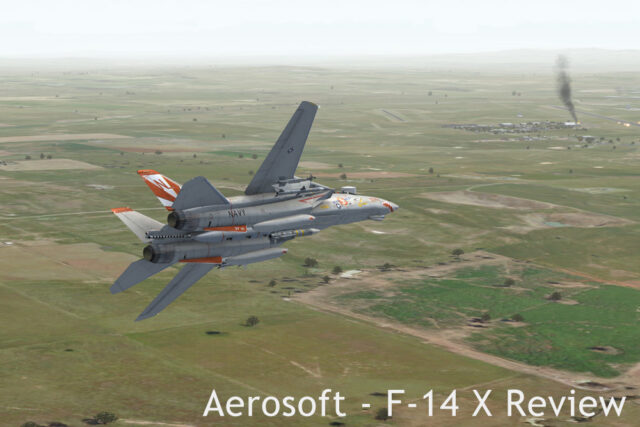

Tacpack:
The Aerosoft F-14 X is a great add-on that has lots to offer on its own. But it gets even better if you have the Tacpack by Vertical Reality Simulations installed and running as well.
The Tacpack switches those weapons under the Tomcat to ‘armed’, so to speak. Whereas the F-14 without Tacpack features the dynamic payloads and all radar modes, the Tacpack lets you launch those weapons at your targets and see the result. Additionally, the weapon status panel comes to life with the Tacpack, as do the ECM and RWR systems.
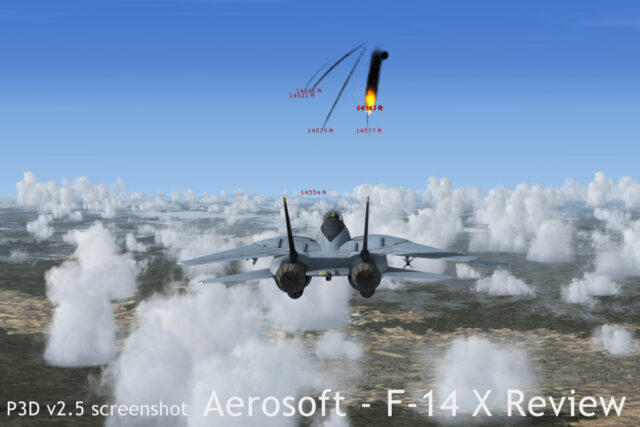

A great feature to note here, is that the F-14 automatically detects whether the Tacpack is running, with the associated features in the Tomcat working (or not) as applicable. No bother with different version with or without Tacpack, or an inoperative aircraft if the Tacpack is disabled. It doesn’t really get more user-friendly than this.

Extras:
There are some noteworthy extras shipping with the Aerosoft F-14 X. Their main focus is helping the user recreate a more realistic environment to operate the Tomcat in.
The largest and most visible of these extras is a very nice rendition of USS Kitty Hawk (CV-63). Kitty Hawk was the first ship of her class, and the last oil-fired (i.e. non-nuclear) aircraft carrier in commission with the US Navy. Kitty Hawk was commissioned in 1961 and decommissioned in 2009. She is currently held in reserve.
The USS Kitty Hawk model that comes with the F-14 X does a very nice job of representing the carrier as it would have looked in the 80’s. It is fully functioning in FSX or P3D, with working catapults and arrester gear, as well as a custom FLOLS (Fresnel Lens Optical Landing System).
There are several ways of using the carrier in your simulator. First, Kitty Hawk is found on 11 places around the virtual world travelling 24-hour routes in historically relevant locations. Each of these routes also has a saved flight associated with it that will start the flight landed on the carrier.
The Kitty Hawk can also be made available at will using utilities like AIcarriers or the Tacpack. Kitty Hawk is a very nice addition that definitely adds value to this package. One very slight remark here, is that I would have liked to see more of the saved flights use the F-14B version. Currently, it’s only one out of 11, with all others using ‘A’-Tomcats. A slight remark indeed, as there is nothing stopping you from just switching aircraft after loading the flight.
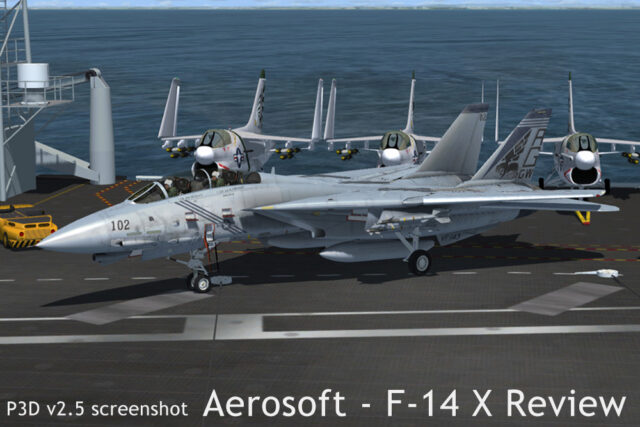

The other big extra is the addition of several missions that can be accessed via the ‘Add-on’ menu in the FSX or P3D toolbar. There are 3 basic missions: ‘Intercept’ spawns one or 2 ‘enemy’ aircraft that need to be intercepted and chased away. The tactics needed to make them turn away depends on the type of ‘bandit’. A second type of mission is an escort mission. In this scenario, a friendly aircraft has to be escorted through the carrier airspace. The third option, ‘Carrier Airspace Patrol’, is a random combination of the above 2 types, but also holds the possibility of having to help a lost pilot. All these scenarios come with relevant AI traffic with correct models and appropriate liveries. These scenarios only work in the vicinity of an aircraft carrier, but can be started both in the air or landed on the carrier. The spawn times of the relevant scenario participants are random, but dependent on whether you start in the air, or landed.
I like these scenarios. They do add a nice touch to flying the F-14 in FSX or P3D, and really give you the opportunity to get to know your aircraft and see what it was made for. The downside is that I find the feedback and instructions to the user a bit lacking. It’s not always clear what you really have to do, or when you are successful.
A fourth scenario is one that does not require the presence of a carrier: spawning a tanker. If you use this option, a KA-6D Intruder will be spawned several miles in front of your aircraft. Downside: I can’t get fuel to flow from the tanker to my aircraft. No idea why, because it works perfectly with a TacPack spawned tanker. So this function is a bit useless to me until it is fixed.
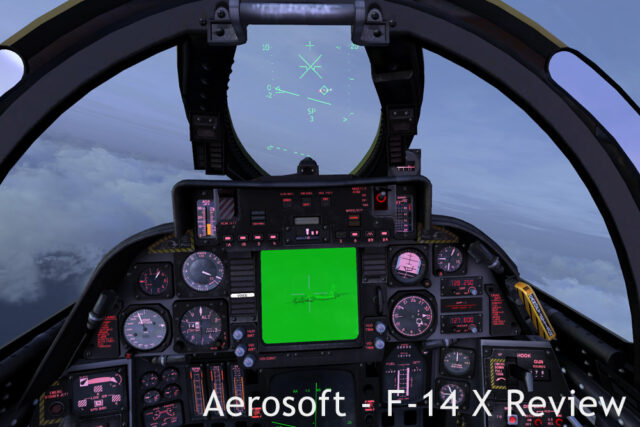
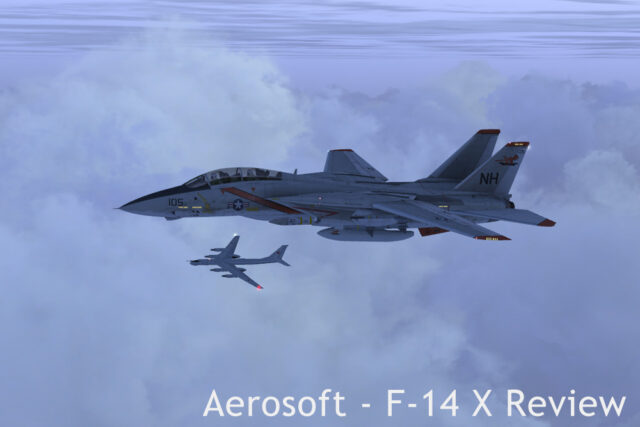

Conclusion:
I for one are very happy to have a Tacpack compatible F-14 Tomcat available for FSX and P3D. And it certainly doesn’t disappoint in the quality department, performing equally well in either sim. The visuals are great, and the flight dynamics fantastic. But on the other hand, I think this product could do with a little more polishing on several aspects. Unfortunately, the promised service packs (apart from the first one) have not materialised yet. So, my final opinion: a very good product and an aircraft I love to have in my virtual hangar. Some small fixes and refinements, and it’ll be great. I’m very happy with what this development team has produced, and I’m looking forward to what these talented individuals bring us in the future.
The Aerosoft F-14X is available from SimMarket for €29,40 (excluding VAT) in both download and box format. Please note that you need to add the VAT for the boxed version or if you’re buying the download version in the EU. The price is somewhere around €35 in this case.
Like:
- Great visuals
- Outstanding flight model
- detailed systems
Don’t like:
- Some aspects could be better documented in the manuals
- Some parts of the product could use a bit more polishing
Links:
F-14 X on SimMarket (Download)
Test System:
Intel Core i5-2500K @ 4×3.3GHz (stock speed)
8GB DDR3 RAM
MSI GTX 960 Gaming 2G
Windows 7 64 bit
FSX Deluxe + Acceleration
Lockheed Marting Prepar3D v2.5






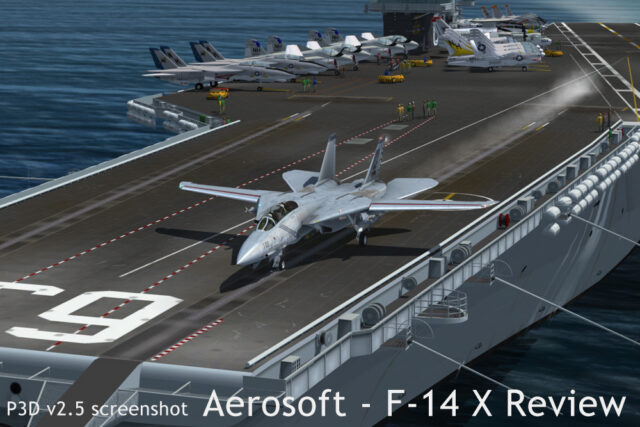
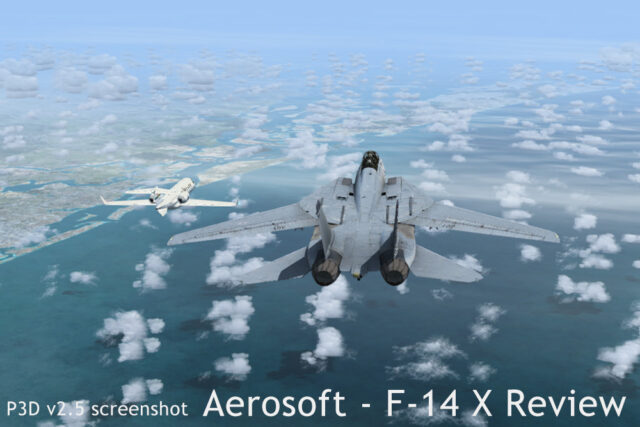
![[Video🎬] New Trailer 4K for Turkish Airports MSFS by SceneryTR Design – Istanbul – Ankara Trabzon by SIMMARKET](https://www.simflight.com/wp-content/uploads/2024/04/SceneryTR_thumb.jpg)
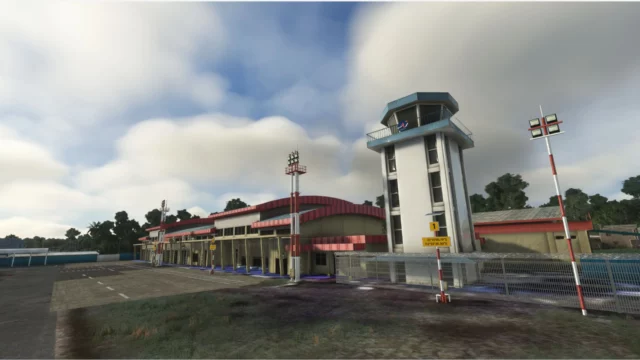
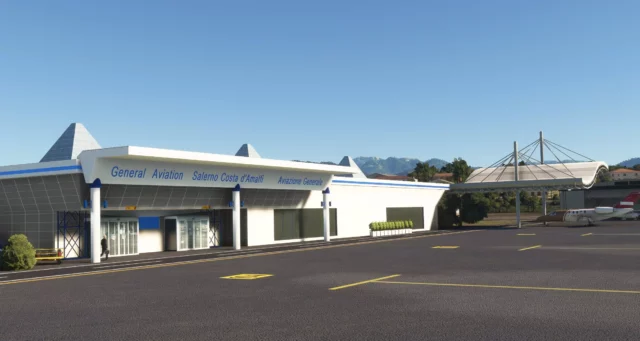
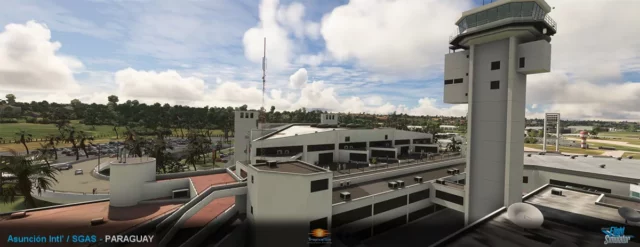
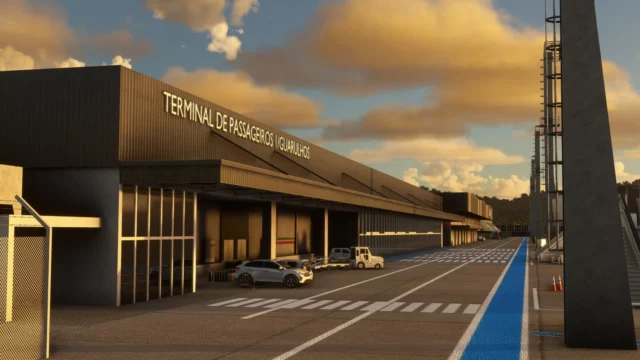
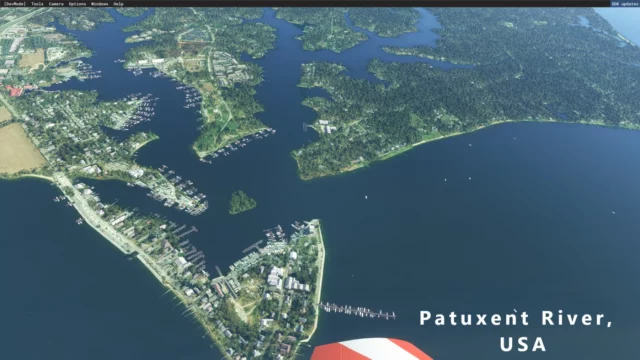
0 Responses
You write: “The choices are FSX (SP2 or Acceleration)”. This is not correct. It must be Acceleration; SP2 is not enough!!!
Regards Werner
Werner,
Unfortunately, you are incorrect.
The part you quote is talking about the installer. And the installer gives you the following options:
– FSX SP2
– FSX Acceleration or Gold
– Prepar3D v2
– FSX Steam Edition
Additionally, the F-14X will work in FSX SP2. However, SP2 doesn’t support some features, in particular carrier operations.
Best regards,
Lars
Thanks for the review. Nice screenshots.
Thanks for the review. May I suggest that reviews are moved to the right column on the home page. Otherwise one can have the impression that there are no news for several days.